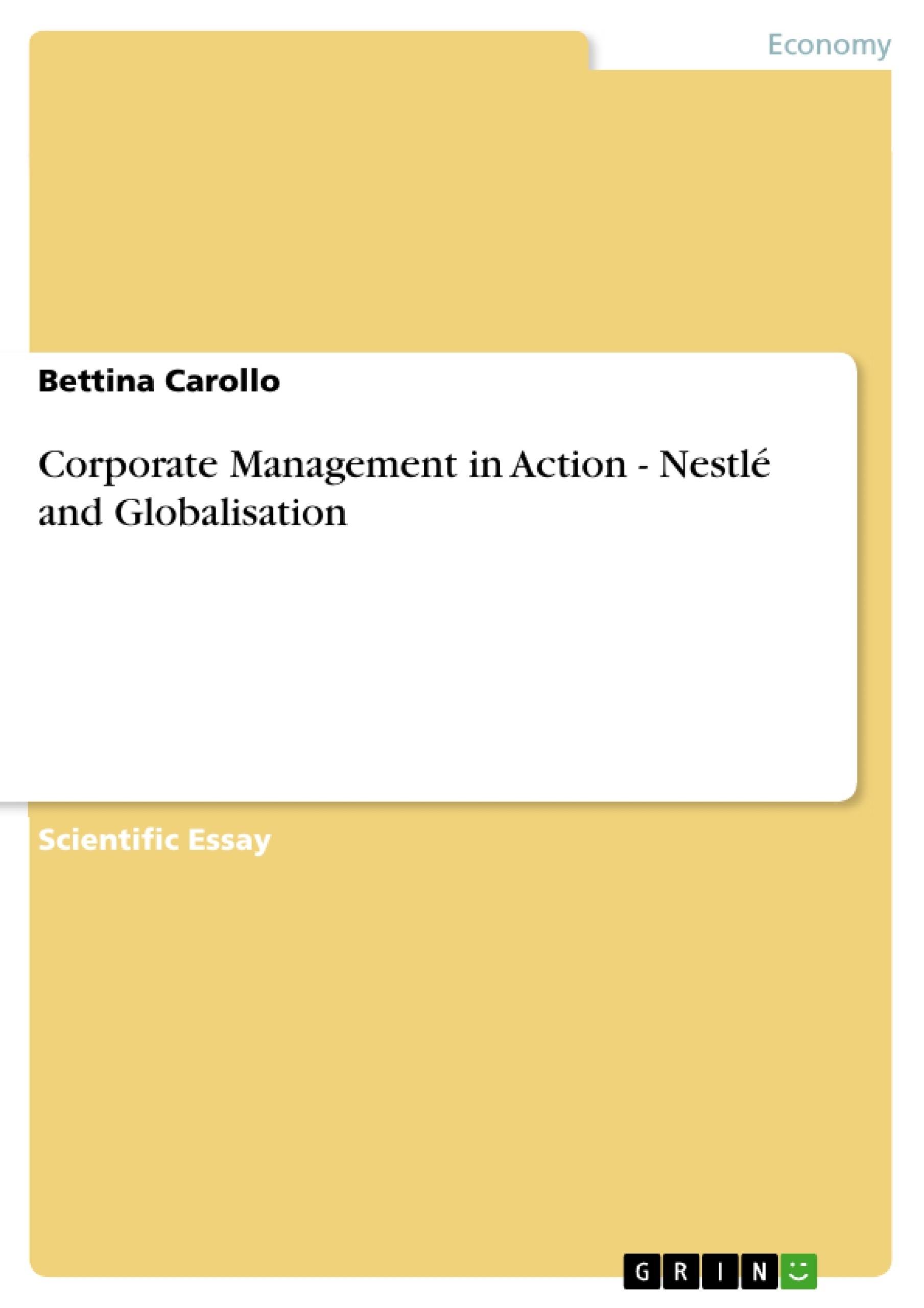The world we live in today is characterised by being smaller than it was before. This assumption comes from the idea that the time for people to travel between continents has been significantly reduced, as well as technology has sped up the process to get information and communication is no longer a barrier. Big organisations have strategically followed globalisation steps and their businesses are now global, i.e., consumers can have the best items from all different countries available in their local markets.
CONTENTS
1. Introduction
2. External Factors
2.1 Porter's Five Forces
3. Global Strategies
3.1 Company Structure
3.2 Acquisitions
4. Research & Measurement
4.1 Primary and Secondary research
4.2 Hard and Soft data
5. Conclusion
6. References
1. Introduction
The world we live in today is characterised by being smaller than it was before. This assumption comes from the idea that the time for people to travel between continents has been significantly reduced, as well as technology has sped up the process to get information and communication is no longer a barrier. Big organisations have strategically followed globalisation steps and their businesses are now global, i.e., consumers can have the best items from all different countries available in their local markets.
From the point of view of the world economy, the domination consists of US, Japan/ South East Asian and Western European trades and investments. A huge cultural, technological and economical integration among these three regions is apparent and the majority of the companies’ activities are concentrated among these countries.
The fact of being international allows companies both to expand into new markets and to control production and consumption away from the home-country. Such companies are known as Multinational or Transnational organizations and they have the ability to control the resources and operations of their usual activities by managing their subsidiaries.
The world’s leading food manufacturer is Nestle, which has developed its global strategy based on its business principles, respecting local laws and cultures. Its brands are not only market leaders but also recognised worldwide. Nutrition, Health and Wellness are the core of the business and the focus is to continuously improve the nutritional value and taste of its products.
Since its foundation in 1867, the company has matured and adapted to the new globalised world. However, the principles of fairness, concern for people and honesty have followed the company and are key ingredients for its success. In order to become the world leader in food and beverages, Nestle management team has developed and aspired to success through constant yet careful strategies over the years.
Its world presence cannot be compared to any other food company, having its 8,000 product brands distributed in over 140 countries with 449 factories throughout the world in 2009. Apart from that, its products are the first or second in 90% of its sales markets. Nestle is a truly multinational company.
2. External Factors
The model created by Porter (1980) to examine the competitive structure of a trade analyses its appeal by considering five forces to sell products within a strategy.
The fist factor would be the barriers in a new entry. As Nestle has operated over a century and started expanding into other markets a long time ago, the threat of new competitors is rather slight. Its experience and market knowledge are incomparable based on its philosophy of free competition. No commercial policy or prices are agreed with competitors but they are a result of fair competition. However, it is not always easy to enter a market, not even for multinationals like Nestle. One of the barriers faced by Nestle is that it does not own the licence for the Kit Kat chocolate bar biggest market, the US. According to Peter Gumbel, in his Time article dated 14th Nov 2007, the only possibility for Nestle to get the American Kit Kat license would be if Hershey sold it to them.
The power of buyers is the second factor. The more powerful they are, the more likely it is that the company will have to adjust its prices to reach their satisfaction, therefore reducing the company’s profit. Nestle has estimated that in the next few years over one billion new clients will be buying its brands for the first time, as a result of the company’s presence in emerging markets. By embracing this opportunity, the company has created a low-cost but high-quality structure that is called “Popularly Positioned Products”, which has given reasonable financial returns. Nestlé provides high nutritious and reasonable priced products to low-income buyers for their daily basis consumption.
2.1 Porter's Five Forces
illustration not visible in this excerpt
The third factor is known as the power of suppliers. In many trades the suppliers are so strong that they can stipulate their prices, therefore the company’s profit is jeopardised as they have less power to negotiate. This problem may get even worse if the number of suppliers is small so that the company has no way out. For Nestle, it is important to help its suppliers, whether they are industrial or agricultural, to reduce their waste and become better, faster and more efficient. By working together they can achieve all these results.
[...]
- Quote paper
- Bettina Carollo (Author), 2010, Corporate Management in Action - Nestlé and Globalisation, Munich, GRIN Verlag, https://www.grin.com/document/191736
-

-

-

-
Upload your own papers! Earn money and win an iPhone X. -

-
Upload your own papers! Earn money and win an iPhone X. -

-
Upload your own papers! Earn money and win an iPhone X. -

-
Upload your own papers! Earn money and win an iPhone X. -

-
Upload your own papers! Earn money and win an iPhone X.

